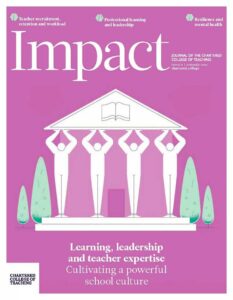Identifying evidence-based professional development: Programmes, forms and mechanisms
Written by: Sam Sims and Harry Fletcher-Wood

11 min read
Teachers acquire new skills in a number of ways: through experience, through working with other high-quality teachers and through participating in effective professional development (for a summary, see Allen and Sims, 2018). There are several ways in which policymakers and school leaders can try to affect teacher quality through each route. But effective professional development (PD) has the potential to be both scalable and portable, making it a particularly attractive option for improving teaching quality.
The difficulty is in understanding the apparently innocuous ‘effective’. How do we know what is effective, as opposed to just plausible, interesting or enjoyable? How do research funders like the Education Endowment Foundation (EEF) in England know which types of interventions to test? And how do school leaders and teacher trainers know which types of PD to opt for? In this article, we set out three different foci for identifying effective PD: programmes, forms and mechanism
Join us or sign in now to view the rest of this page
You're viewing this site as a guest, which only allows you to view a limited amount of content.
To view this page and get access to all our resources, join the Chartered College of Teaching (it's free for trainee teachers and half price for ECTs) or log in if you're already a member.
0
0
votes
Please Rate this content
Please login to comment
0 Comments
Oldest
Newest
Most Voted
Inline Feedbacks
View all comments










